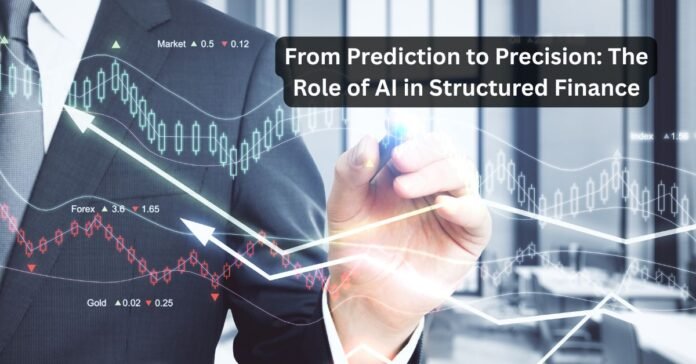Structured finance has always carried a reputation for complexity — vast spreadsheets, intricate risk models, and layers of manual analysis that only seasoned experts could navigate. For decades, this field demanded painstaking work: analysts validating thousands of data points, building models by hand, and relying on assumptions that often struggled to keep pace with real-world volatility. While this rigor offered depth, it came at the cost of speed, agility, and sometimes, accuracy.
Today, however, the game is changing. Artificial Intelligence (AI) and data-driven tools are reshaping the very foundations of structured finance, from the way securities like RMBS, CMBS, CLOs, and CDOs are analyzed to how risks are identified and managed in real time. What once required days of manual effort can now be achieved in seconds with AI-powered systems that uncover trends, stress-test scenarios, and deliver insights with unprecedented precision. The result isn’t just faster decision-making — it’s a smarter, more resilient approach to finance in an era where every second counts.
First, What Is Structured Finance?
Structured finance involves pooling financial assets (like mortgages, loans, or leases) and turning them into tradable securities. These are usually divided into tranches, which vary by risk and return, and then sold to investors.
The process includes complex modeling, credit risk analysis, and performance tracking — making it the perfect space for AI and data-driven automation to step in.
Enter AI and Data-Driven Tools
In structured finance, data is everything — but it hasn’t always been easy to use. Traditionally, analysts had to work through enormous spreadsheets and manually update models. That’s changing fast.
Today, AI tools can:
- Process millions of data points in seconds
- Predict risk using machine learning
- Generate real-time analytics and pricing models
- Spot anomalies or red flags early
- Automate compliance and reporting tasks
This means deals can be priced faster, risk models can be adjusted in real-time, and investors can make smarter, faster decisions.
Key Areas Where AI Is Making a Difference
1. Loan Pool Analysis
Instead of randomly sampling loan files, AI algorithms can now scan 100% of a loan pool in minutes. They can flag unusual borrower behavior, detect fraud patterns, and even predict which loans are more likely to default — all based on historical data.
2. Risk Modeling
Machine learning models can continuously learn from new data, improving their predictions over time. For example, instead of using static assumptions, AI can adjust risk scores as market conditions shift — giving analysts a clearer picture of performance across tranches.
This is especially valuable in complex instruments like Collateralized Loan Obligations (CLOs), where performance monitoring, cash flow projections, and covenant tracking can become highly intricate. Platforms like CLO software solutions are designed to meet these exact challenges, offering advanced analytics and modeling tools that help institutions manage CLO portfolios with greater precision and flexibility.
3. Pricing and Valuation
AI-driven valuation engines can use current and historical data, credit scores, prepayment trends, and even macroeconomic indicators to deliver more accurate price ranges for securities — often in real time.
4. Surveillance and Performance Tracking
Instead of waiting for monthly or quarterly reports, AI tools allow for daily or even real-time surveillance. Investors and portfolio managers can see which tranches are underperforming, where prepayment speeds are rising, or where early delinquencies are forming.
5. Automation of Manual Tasks
AI tools are reducing hours of manual work — such as generating reports, compiling risk summaries, or validating data from third-party servicers — freeing up analysts to focus on strategy instead of spreadsheets.
What This Means for the Industry
The use of AI in structured finance is not just about speed — it’s about clarity and control.
- For issuers, it means more accurate structuring, faster deal turnaround, and better investor transparency.
- For investors, it means smarter risk management and quicker decision-making.
- For regulators, it offers cleaner audit trails and more consistent compliance.
According to industry reports, financial institutions using AI for credit modeling and structured products have reported efficiency gains of up to 40% and risk identification improvements of over 25%.
AI in Structured Finance: Shaping the Next Era of Decision-Making
Structured finance will always be complex — but with the rise of AI and data-driven tools, it’s becoming faster, smarter, and more precise. As these technologies continue to evolve, they are reshaping everything from how deals are modeled to how risks are managed in real time.
We’re entering a future where predictive analytics, intelligent automation, and high-performance data platforms are no longer optional — they’re essential. But while AI can enhance speed and accuracy, human insight and strategic judgment will always play a central role in decision-making.
For firms looking to stay ahead in the structured finance space — especially in areas like CLO analysis, portfolio management, and deal structuring — embracing next-generation solutions isn’t just an advantage; it’s a necessity.

